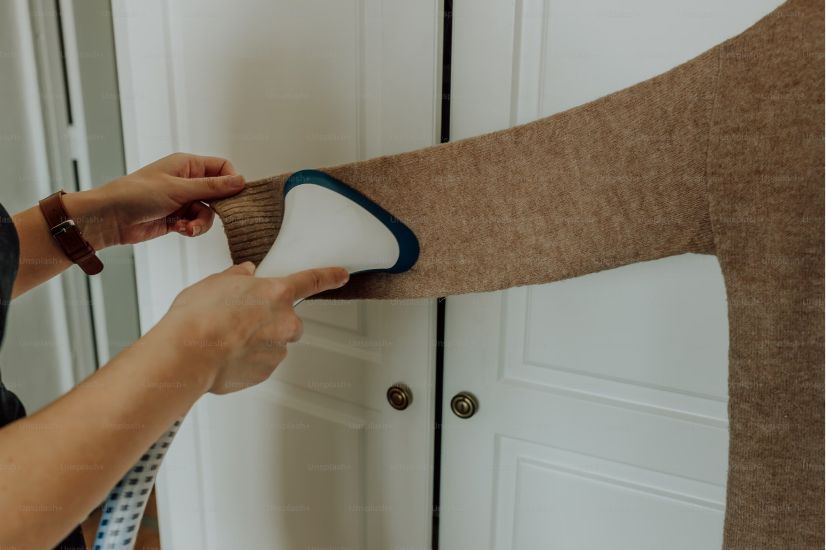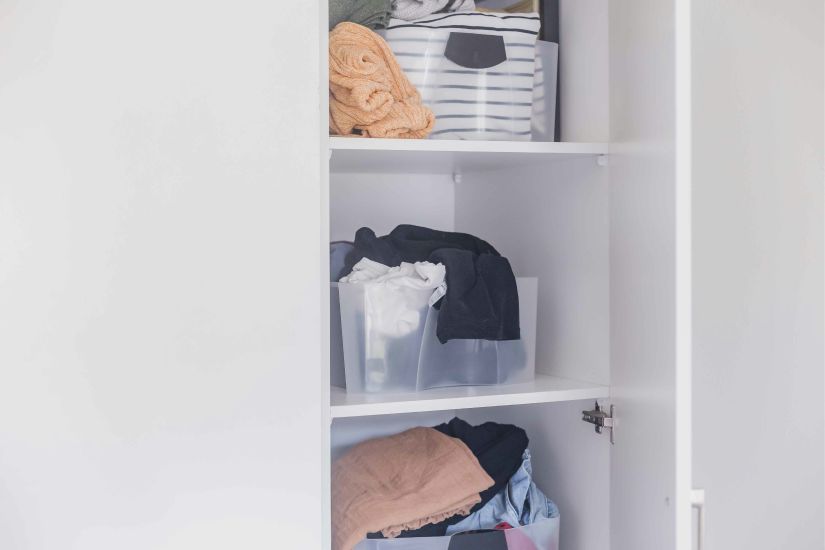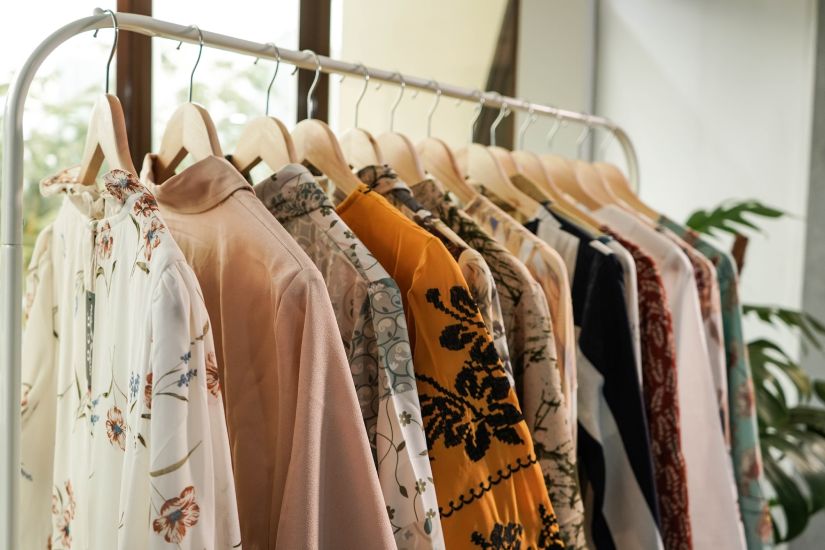How to Store Your Clothes Long Term – Best Practices for Families and Organized Storage Solutions
Storing your clothes long-term can seem challenging, but with the right tips and tricks, it’s like ensuring your favorite novel stays pristine on the shelf for years. You want your garments to stand the test of time, whether for seasonal wardrobe rotation, sentimental keepsakes, or for those timeless pieces you’ll pass down to the next generation.
The key is preserving their quality, so they come out of storage looking as sharp as the day they went in. However, clothes are sensitive to their storage environment, and without proper care, your cherished pieces might fall victim to dampness, pests, or the dreaded musty smell.
Assessing Clothing for Long-Term Storage
When you’re looking at your wardrobe and deciding what to put away for the long haul, think quality over quantity. Items made from silk, cashmere, wool, or leather aren’t just luxurious—they’re also built to last, making them ideal for long-term storage. Here’s what you need to keep in mind to preserve the life of these precious pieces.
First, hunt down those timeless styles, like the classic blazer or the chic trench coat, that you know will stand the test of time. These pieces are more than just clothes; they’re investments. Lean towards attire from renowned brands with a strong reputation for durability and craftsmanship. That way, you’re not just storing clothing—you’re preserving future heirlooms.
Speaking of vintage and limited edition items, these are the gems that often gain value as years pass by. They’re not only a testament to your impeccable taste but might also be the prized items future generations will cherish. Before you stow these treasures away, make sure to give them a thorough evaluation.
Ensure they’re in excellent condition by having them professionally cleaned—any ignored stains or odors might worsen over time. Look over each piece carefully; you’ll want to remove any metal hardware that could rust or tarnish the fabric while in storage. By clearing these hurdles, you’re not just tidying away clothes; you’re safeguarding pieces of history.
For the younger crowd in your home, storing children’s clothes that siblings—or even future generations—might wear, requires equal care. Pick pieces that reflect both practicality and the potential to handle a second round on the playground. Remember, you’re helping weave the fabric of your family’s story, one cherished garment at a time.
Preparing Clothes for Storage
Before tucking away your garments for a while, ensure they’re squeaky clean and bone dry. Why? Any leftover moisture or stains are invitations to mildew and those pesky, permanent marks. It’s like preparing for a long vacation – everything needs to be in tip-top shape before you lock the door!
So, first up, give everything a good wash and thorough drying. Don’t tempt fate by storing clothes with accidental souvenirs like stains – be vigilant and treat any blemishes accordingly. After all, tidying up is key here, which means mending any signs of wear, think loose threads or missing buttons.
When it comes to packing, think breathable containers with tight-fitting lids, a definite step up from cardboard, which could betray you by inviting unwanted guests like insects or moisture. And while at it, let’s not squish the life out of your clothes with vacuum-sealed bags, okay? Instead, gently layer your garments, heavy jumpers at the bottom, and tuck them in with acid-free tissue paper for that extra snugness.
Choosing the Right Storage Supplies
When tucking away your treasured garments for the long haul, selecting the proper supplies is pivotal. Imagine clear plastic storage bins as your go-to; their transparency lets you peek at your possessions without a pry. Confirm they tout tight lids to fend off uninvited dust and dampness.
For those fancy frocks and sharp suits, wardrobe boxes are your closet away from the closet. They come equipped with a rod, serving as a fortress against folds and creases. And here’s a tip—wrapping your delicate duds in acid-free tissue paper can keep them looking pristine, staving off any acidic interactions.
Talking about protection, let’s chat about cedar. Toss in some cedar blocks or balls to deter those pesky moths and their fabric-fancying friends. For a staunch guard against the sneaky creep of moisture, silica gel desiccant packs are your silent knights, invisibly safeguarding fibers from a mildewy fate.
Now, about those plastic garment bags—let’s just steer clear, shall we? Their non-breathing nature could trap moisture, so why risk it? Opt for breathable cotton sheets or dust covers, giving your clothes a breath of fresh air, even when they’re put away.
Got something extra special? Archival-quality plastic bags to the rescue! They’re specially designed to let your items breathe while keeping them untouched by dust and light. If you must go the box route, acid-free boxes are your safest bet for longevity, keeping discoloration and degradation at bay.
Remember, a breathable, tight defense against moisture, pests, and contaminants is the name of the game when it comes to keeping your clothes in tip-top shape while they rest.
Selecting the Right Storage Container
When you’re planning to store your clothing for a long stretch, the container you choose can make all the difference. Let’s walk through some essential criteria to select the best one for your garments.
Size Matters: First, consider the bulk of clothes you need to store. You’re aiming for a container that’s roomy enough to avoid squashing your clothes but not so oversized that it takes unnecessary space or allows items to shift and wrinkle. A variety of sizes ensures you’ll find a choice that fits just right without crowding fabrics or leaving too much empty space.
Keep It Climate Controlled: Your clothes are sensitive to their environment. Look for containers that support a stable environment, ideally mirroring the conditions of a climate-controlled unit, where temperatures and humidity levels stay consistent. This kind of setting helps preserve your clothes much better than stashing them in a spot prone to temperature fluctuations, like a garage or attic.
Secure Your Threads: It’s not just about keeping your clothes in a box; it’s also about security. Opt for containers that come with robust locking systems, especially if they are to be stored in shared facilities. With advanced security measures such as high-quality locks, you can rest assured that your favorite jeans and cherished sweaters are well-protected.
Remember, snug does not equal secure. While it may be tempting to pack everything tightly to save space, a gentle touch and the right container can extend the life of your clothes significantly.
Packing Clothes Efficiently and Safely
When you’re tackling the task of storing your wardrobe long-term, choosing plastic bins with secure lids over cardboard boxes can be a wise move. They’re champions at shielding your beloved outfits from dampness and unwanted guests like pests. Think of rolling your garments snugly as a space-saving game-changer; this technique is not only a wrinkle-warrior but lets you fit more into your bins with room to spare.
Here’s a pro tip: stash the bulky stuff like denim and knits at the base and layer lighter wears above. Your bins will thank you for the balance. And for those seasonal pieces or delicate delights, vacuum storage bags are your secret weapon, squeezing out the extra air to maximize your space efficiency.
Now, let’s talk about hanging items. Imagine a wardrobe box as your mobile closet, a fortress with a metal rod designed to keep your dresses and shirts in combat-ready condition. Keep your clothes in formation by grouping them, not only by type but also by season. It’s like having a well-organized army at your fingertips when you need it.
A little breathing room goes a long way, so avoid an overstuffed situation. It’s all about that air circulation to prevent any mildew mishaps. And elevate your bins off the ground – just a simple shelf or a pallet fortress against moisture’s siege.
Remember, you’re the master of your fabric domain. By investing a bit of time and care now, you’re ensuring your wardrobe warriors stand ready for the long haul.
Creating the Ideal Storage Environment
When you’re tucking away garments for the long haul, think about their home-away-from-home. Climate-controlled settings are your best bet, keeping temps cool—ideally between 65-75°F—and humidity low, think 30-50%. This is crucial because too much moisture invites mildew, and heat can mess with the fabric’s integrity.
Elevate your apparel. Instead of plopping everything directly on that cold, concrete floor, get your clothes a lift with shelves or bins. This keeps moisture at bay and critters at a respectful distance. And hey, speaking of bins, acid-free containers are the golden ticket here. They’ll shield your threads from discoloration and deterioration.
For your prized silk or vintage items, envelope them in acid-free tissue to prevent the fabrics from turning brittle or yellow over time.
Moisture’s a sneaky one, but you’ve got this. Toss in some silica gel packets or cedar blocks to keep your clothes dry and smelling fresh. Block out the light to keep colors vibrant, darkness is your pal here.
Creating that stable, cool, dark, and dry environment with smooth airflow might seem like a bit of a to-do list, but it’ll pay off. Your clothes will thank you when they come out of storage looking just as fabulous as when they went in.
Routine Checks and Maintenance
When it comes to keeping your clothes in tip-top shape during long-term storage, sticking to a regular inspection schedule is key. Aim to give your stored garments a thorough check-up every six months, and if they’re tucked away for the long haul, a yearly exam is a must. This isn’t just about a quick peek – be prepared to unpack each piece and give it a good once-over.
Here’s a handy checklist for your routine inspections:
- Moisture and Mold: Sniff out and search for any damp spots or the telltale signs of mold and mildew. These nasties can wreak havoc on fabrics if left unchecked.
- Unwanted Guests: Nobody wants critters in their closet. Keep an eye out for moth larvae or signs of other pests that love to munch on materials, especially natural fibers.
- Stains and Odors: Check for discolorations, mysterious marks, or any unusual smells that might have developed while your clothes have been out of sight.
During the inspection process, carefully unstow and unfurl each item to inspect every nook and cranny – think pockets, collars, and cuffs. A soft brush can work wonders for banishing surface dust. If you stumble upon any wrinkles or creases, mix things up by refolding or rehanging items differently to avoid fabric fatigue.
Should you encounter any issues, such as persistent stains or pest problems, consider a professional cleanup. Nipping these problems in the bud can save your clothes from an untimely end. And don’t forget, a breath of fresh air goes a long way – occasionally airing out your wardrobe keeps it fresh and ready for future seasons.
Store Your Clothes Long Term with Maple Leaf Self Storage
Taking care to store your clothes properly is more than just a chore; it’s about preserving the life of your garments and being wise with your resources. Whether you’re stashing away seasonal wear or keeping heirlooms safe, using a professional storage solution like Maple Leaf Self Storage can ease your mind and protect your investment. Our climate-controlled units keep your clothes in pristine condition, free from the damage often caused by fluctuating temperatures and humidity.
Got any personal insight or handy tips on storing clothes? Feel free to share your experiences! And if you’re seeking professional storage solutions, view the options available at Maple Leaf Storage. Our expert team is ready to help tailor a storage plan to keep your clothes safe and secure.
Share




